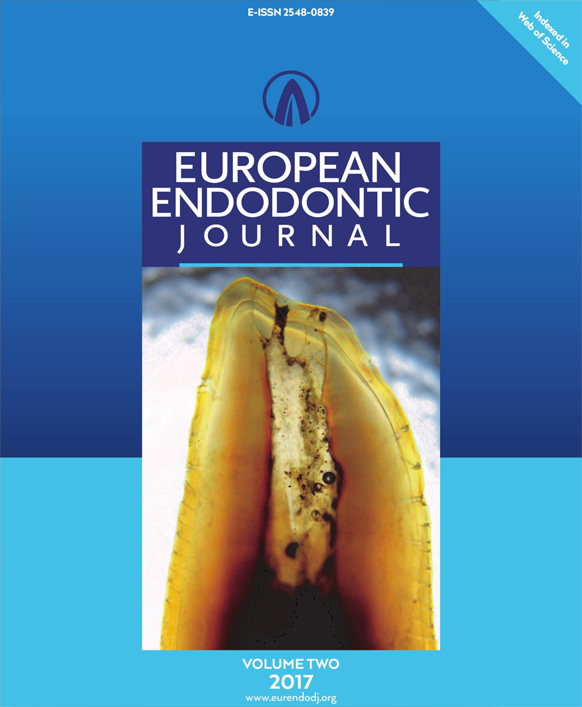
European Endodontic Journal
Yazarlar: Letícia Chaves De Souza, Mamatha Yadlapati, Hélio Pereira Lopes, Renato Silva, Ariadne Letra, Carlos Nelson Elia
Konular:-
DOI:10.5152/eej.2017.17018
Anahtar Kelimeler: Bioactive materials,Bismuth carbonate,Mineral trioxide aggregate,Portland cement,Root repair material
Özet: To propose bismuth carbonate, a radiopacifying agent, as a new endodontic root repair material that was added to Portland cement (PC) at 2 wt%, 5 wt%, 10 wt% and 15 wt%, and physicochemical and biological properties of each formulation were evaluated in comparison to MTA-Angelus. Methods: Mixed and powder samples were analysed by scanning electron microscopy (SEM) and X-ray power diffraction (XRD), and the semiquantitative constitution of the powder was determined by energy-dispersive spectrometer (EDS). Setting time was evaluated by Vicat needle and radiopacity analysed with digital X-ray. The pH of all tested materials was observed after immersion in water for 3, 24, 48, 72 and 168 h (or 7 days). Solubility and calcium release were measured after immersion in water for 24 h. A multiparametric assay XTT-NR-CVDE was used to evaluate the cytotoxicity of the materials in human periodontal ligament (HPDL) fibroblasts. HPDL fibroblasts were exposed to PC 15% and mineral trioxide aggregate (MTA), and the expression of proinflammatory cytokines (IL1A, IL6, IL8, TNF) and bone formation genes (ALP, COL1, RUNX2) was evaluated by real-time PCR. Mineralisation of HPDL fibroblasts cocultured with PC, PC 15% and MTA was evaluated with Von Kossa staining. Results: PC-based groups presented more irregular and larger particles than MTA. PC and MTA showed similarities as observed by XRD and EDS. Setting time of PC-based groups was increased with the addition of bismuth carbonate. All tested materials were alkaline, and pH tended to reduce over time. All cements had solubility lower than recommended, with no difference between them (P>0.05) and showed calcium release. PC 15% had similar radiopacity when compared with MTA (P>0.05). Cell viability was higher for the tested materials than the positive control (P<0.001), but there was no difference when they were compared with negative control (P>0.05). Gene expression levels were similar for all tested groups (P>0.05). Analysed cements had positive Von Kossa staining. Conclusion: Overall, the addition of 15% of bismuth carbonate did not result in significant changes to its physicochemical and biological properties when compared with MTA, except for the setting time, and may be considered a potential substitute for MTA.